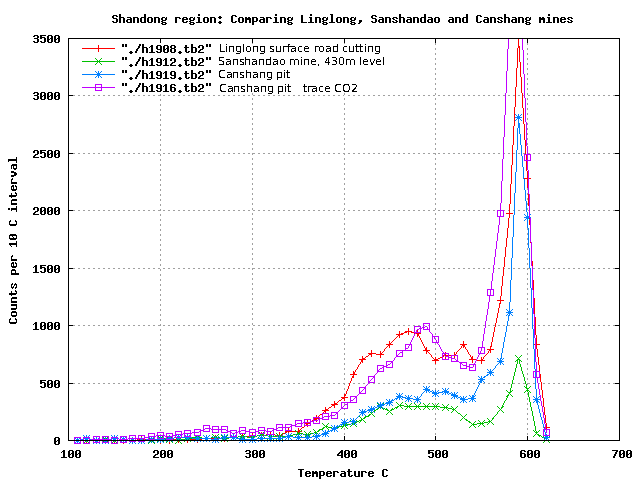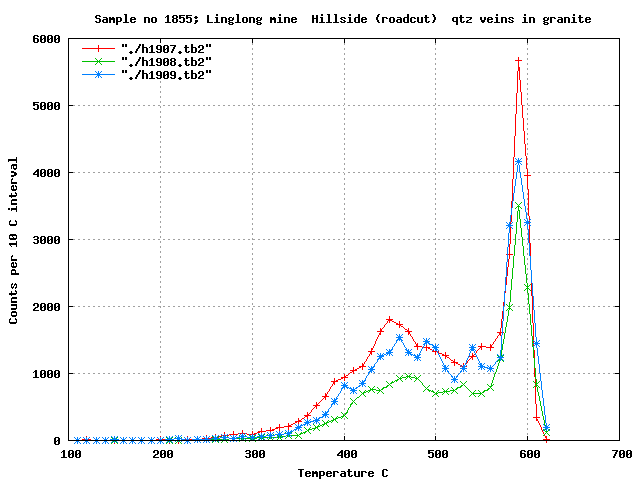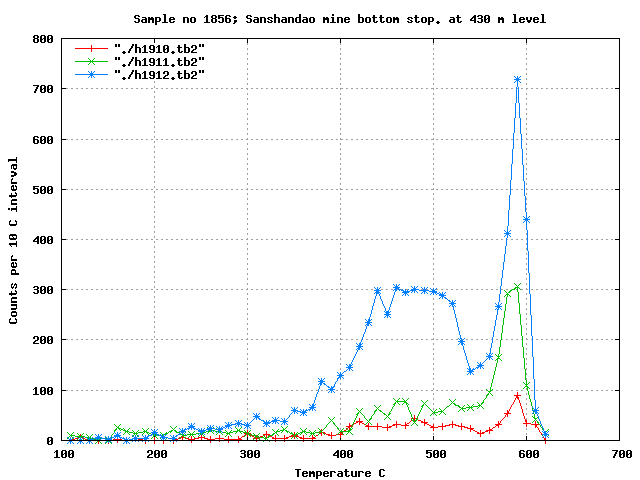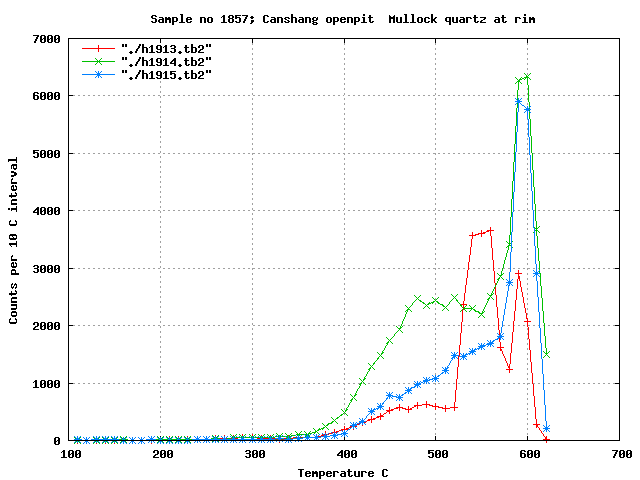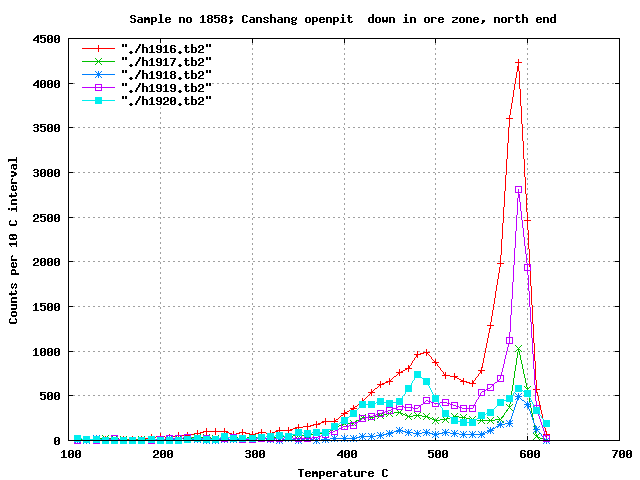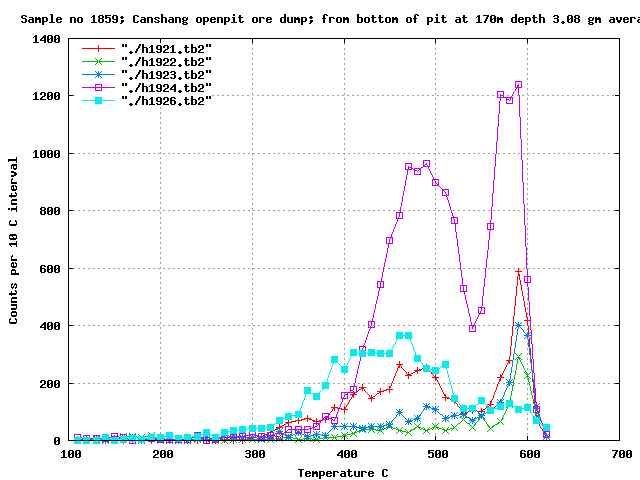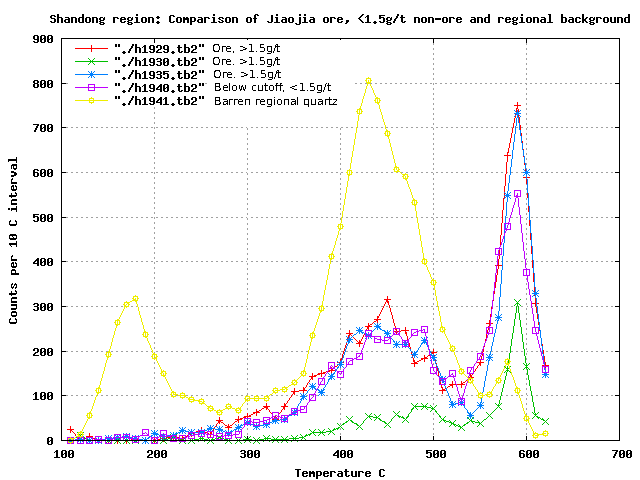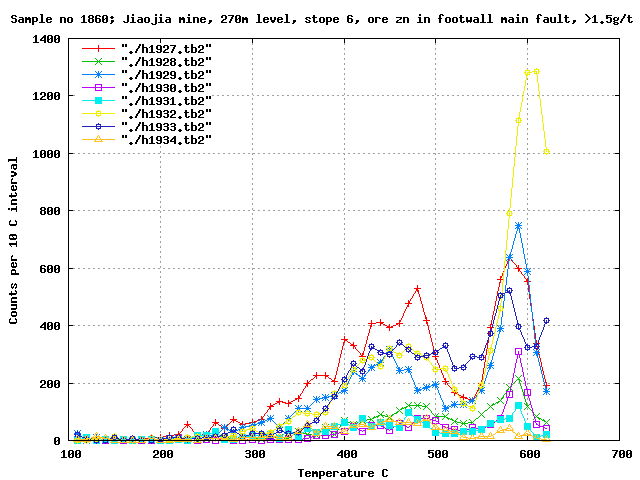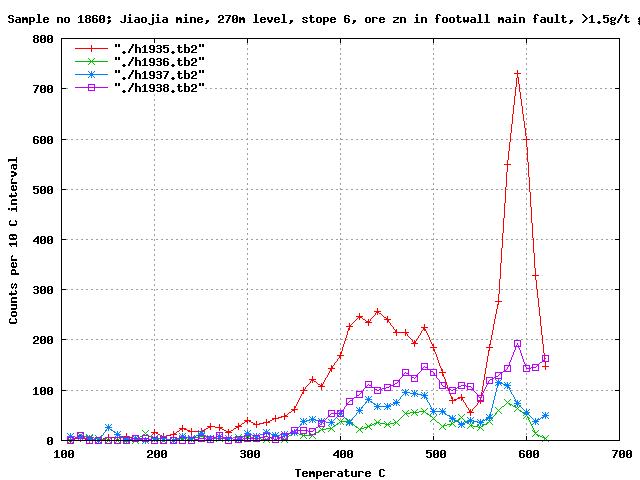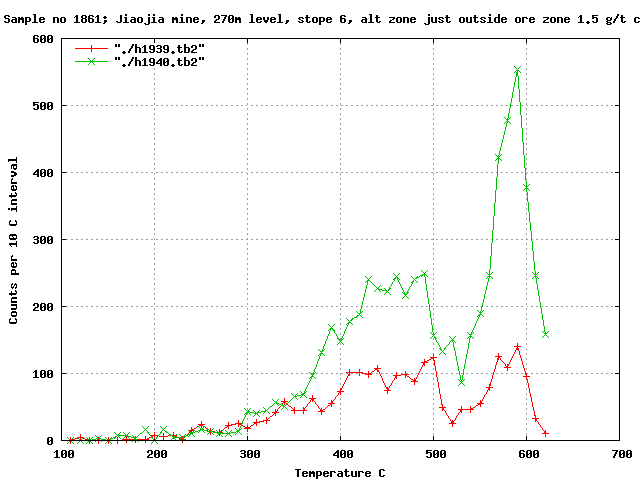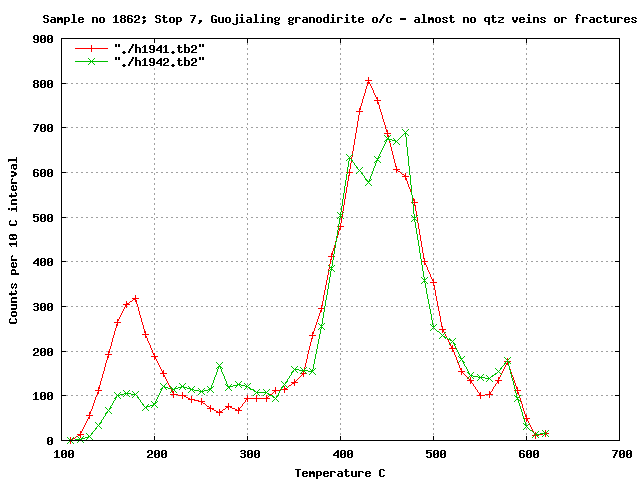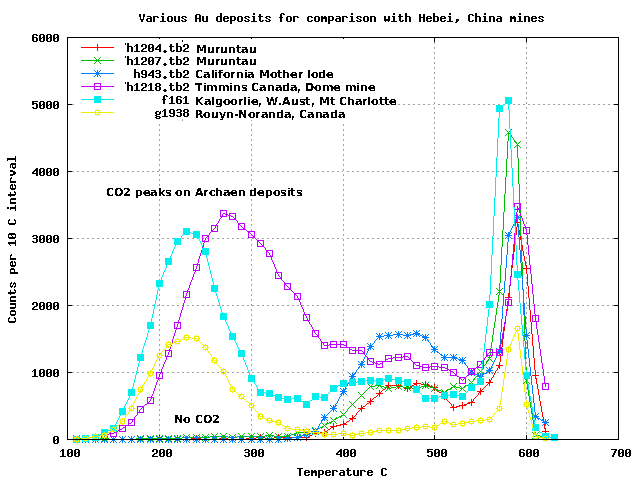Samples were collected from the mines
visited on the SGA conference
field trip to Shandong area Au mines in August 2005 and analysed by
acoustic decrepitation. This method is useful as an exploration tool
and particularly good at rapidly identifying CO
2 rich fluids
in the hydrothermal fluids which formed the quartz.
The map shows the mines sampled, which were: Linglong, Sanshandao,
Canshang and Jiaojia. All of these are within granitoid intrusives.
Only a few background samples from quartz veins distant from the mines
were aable to be sampled.
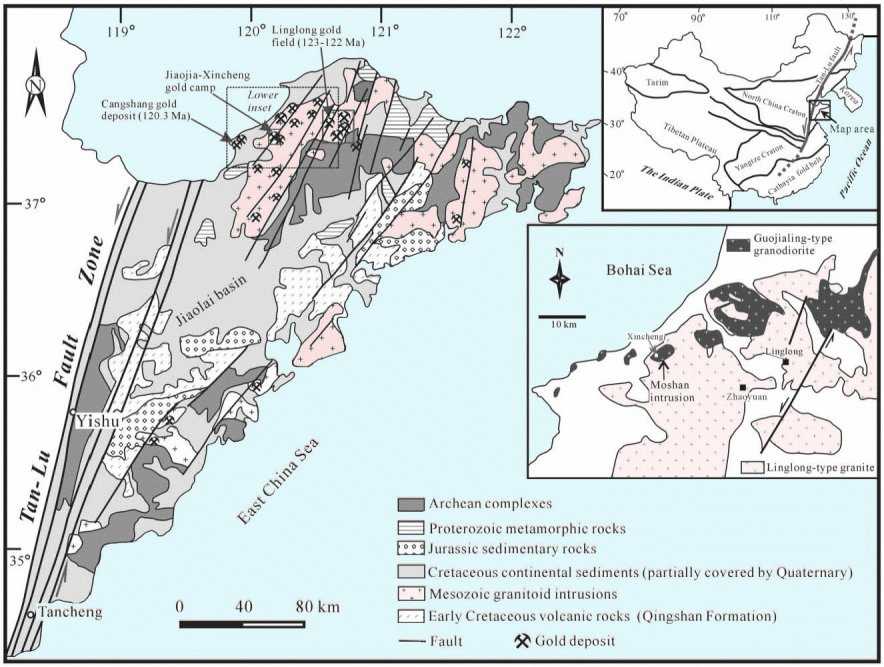
The main observation from my results is that the depositional fluids in
all of these mines lack CO
2. If CO
2 is present in
the fluids, the
decrepitation results show a distinct peak between 200 and 300 C, as
you
can see on the examples from Archaean deposits on the third graph. This
lack of CO
2 also occurs at Muruntau and the Motherlode
deposits in
California and so I infer that these deposits share a similar fluid
genesis.
In general, fluids derived from metamorphic zones greater than lower
greenschist facies would be expected to contain significant levels of
CO
2.
The formation temperature of the Shandong area deposits was about 360C
to 380C.
Of all the samples analysed, only sample h1916 from the Canshang pit
(purple plot below) showed a trace content of CO
2. This is
seen as the
small decrepitation increase at 250C, but this is probably less than 1%
CO
2 content. The formation temperatures are about
380C.
 Applied Mineral Exploration
Applied Mineral Exploration Discussion and research relevant to mineral
exploration.
Discussion and research relevant to mineral
exploration. 
